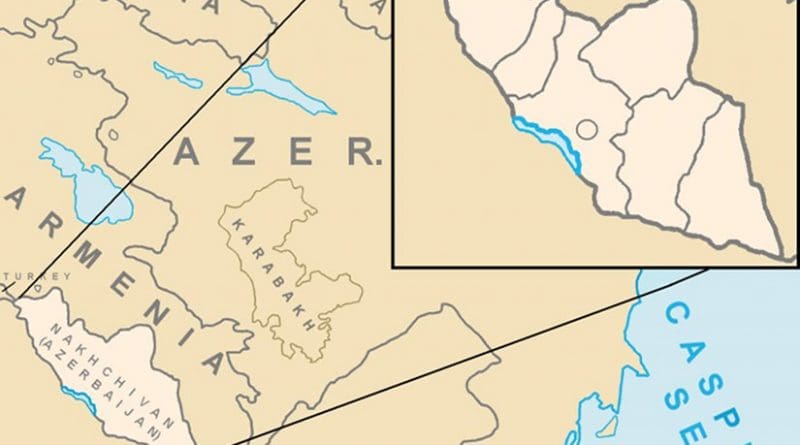Nakhchivan Tourism Promoted In A US Scientific Journal
By Peter Tase
In March 2019, Prof. Ali Jabbarov and Prof. Zulfugar Zulfugarov, published an academic paper that tackles the impressive tourism treasures of Autonomous Republic of Nakhchivan, Azerbaijan. The article, “The Castle Of Alinja: Machu Picchu Of Azerbaijan – Roof Tourism In Nakhchivan, was published under the auspices of Nakhchivan University, Republic of Azerbaijan.
In this publication, both authors have shared valuable information on the tourism potential and tremendous development of this economic sector under the leadership of Hon. Chairman Vasif Talibov.
In the article, Prof. Jabbarov and Prof. Zulfugarov state: “No secret that Roof tourism is one of the rather risky and in the same time too reputed types of tourism. When glancing at the map of this kind of tourism we can observe that the major members of Roof tourists finding themselves in the mountains of the Pamir (called as the roof of the world), Tibet (World Roof Tours) or high buildings in Stockholm and Saint Petersburg, are the people having traditional travelling practice. We think that while there is the potential of the tourists “armed” with pick celled photographic cameras and smart-phones with broad opportunities the better known roof tourism can alter the rooted traditional LLL (Land, Lore, Landscape) or SSS (Sun, Sea and Sand) with EEE (Earth, Extreme, Enjoyment) formula and in a short distance touring tourists can see, learn more things, can get more adrenalin than ever and above all can get pleasure of their trips. In this sense, the impression of any tourists joined the Roof tourism can be more than compared with any simple tourism. Willy-nilly the process is undeniable and we have to believe in this reality. And what about the beneficence of the Rooftop tourism in the example of the Alinja Castle to Nakhchivan or to the practice of the world tourism? First of all, we have to accept this simple reality that tourism is the sensitive field as some other branches that bases on more rational use of the resources. In this regard we have to confess that tourism travels have increased and when the number of tourists increases, the amount of anthropogenic impacts on environment increases respectively and no doubt that it makes contradiction to the principles of sustainability (Cameron & Gatewood, 2008). In other word, if we think of the flower tapped by tourists, or any bird frightened again by tourists in its nest, tens or even hundreds of kilometers distance stretched towards the vast lands to be observed from the highest point as the Alinja Castle is and finally photo hunting venture taken here may be very favorable practice of sustainability (Sunlu, 2003). The most available forms of such compact roof travels can influence to reduce the possible surplus expenses in favor of tour firm’s further activity.”
In regards to the general overview and development of Tourism in Nakhchivan, the two authors have reached a conclusion as follows:
“As a tourism destination Nakhchivan is known very well among the modern experienced tourists. At every tourism season one can read the views and impressions of hundreds or thousands of tourists over internet who visited Nakhchivan. Of course, it is more attractive for venture lover tourists to find themselves in the exclave with 5.5 thousand km2 territories within the Republic of Azerbaijan. Another significant element related to this is that, during cold war period Nakhchivan as a region of the former USSR bordered on Iran and Turkey for this and other reasons generally tourists were not permitted to visit here (Jabbarov & Zulfugarov, 2015). As known the accumulated interest began to display itself at the same time when the USSR collapsed, but the Armenia’s occupation attacks to Azerbaijan soured the critical situation in the Southern Caucasus and energy cut communication and transport blockade in Nakhchivan toughened tourists’ travel to our flourishing land. But starting from 2000 years the number of tourists began to increase in Nakhchivan thanks to economic condition stabilization, transport, communication deals solution and above all the establishment of modern tourism infrastructure. Every year about 400 thousands tourists, majority of which are foreigners, visiting Nakhchivan satisfy with the nature, historical-cultural-ethnographic and anthropogenic values, while originating tourism resources and in the same time their recreation, treatment and acquaintance requirements are realized respectively.”

